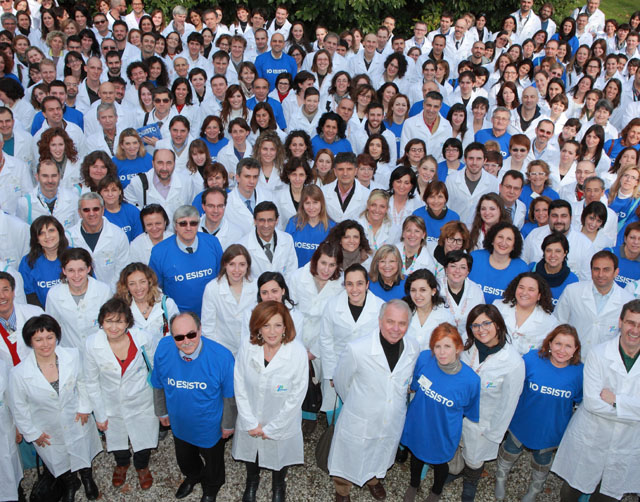A network of partners to make progress together towards finding a cure for rare genetic diseases.

Ever since it was founded, we've always worked with leading rare disease patient organisations. Set up by patients and their families, these groups contribute to speeding up research towards a cure for genetic diseases, while at the same time raising awareness about the disease, fostering contact and the sharing of information among people in similar situations.
To date, over 240 Patient Organisations are part of Telethon’s network Associations, all of which share the same values and goals.
What does becoming a Telethon Partner Association mean?
The network is not a federation, therefore there are no membership fees. Through the network Associations can:
- have a direct and continuous communication channel with Telethon.
- be included in invitations to take part in events organised by Telethon.
- request the patronage of Telethon for their scientific events.
- receive advice about scientific research and the biobank network.
- give visibility to their associative meetings on the on-line Calendar
Genetic disease patient associations can apply to join the network by sending an email to [email protected]; applicants will receive a questionnaire to be filled in and returned with a copy of the statute.
Would you like to set up a rare disease patient association? We can help you! Each year sees the birth of new communities of people sharing the same rare genetic disease who decide to set up an organisation. We provide information and contacts with the world of research to help those who decide to take this road. In addition to this type of support, we can also place new associations in contact with others that already have experience in the field that can guide the new group as it finds its feet.
"Seed Grant" Initiative
Patient’s Associations are networks of families who are committed to engaging and taking care of the interests of all rare patients, of which they are witnesses and representatives. One of their main aims is to foster biomedical research towards the identification and development of potential new therapies for their conditions.
To be sure to support the most effective research, it is necessary to minimize the risks of dispersion of funds in undeserving projects. “How to understand the value of a scientific project? How to choose one project over another? Which Scientists to trust?” are key questions that Patient’s Associations often face when they have the opportunity to provide funds to projects focused on a specific disease of interest.
In 2019 Fondazione Telethon decided to address these needs through the development of the "Seed Grant" initiative, a project dedicated to those Patient’s Associations willing to invest a limited budget into an explorative research project. Fondazione Telethon offers its expertise in ensuring a stringent peer review method for the identification of projects worth funding.
The initiative starts with the launch of a national call focusing on a specific rare genetic disease. The submitted projects are then subjected to evaluation and selection by an ad hoc international Scientific Committee with the key role of identifying those with the highest scientific value and the potential to make progress towards therapy. At the end of the review process, the meritorious projects are presented by Fondazione Telethon to the Patient’s Associations who decides which project to fund.
Fondazione Telethon also supports the Patient’s Associations in constantly monitoring the progress of the funded project.
The “Seed Grant” initiative is definitely attracting interest from an increasing number of Patient’s Associations.
Informative events
We organise two informative meetings every year: the Partner Associations Meeting and the Convention of Patients Associations during the Telethon Scientific Convention. Their aim is to disseminate a culture of scientific research into rare genetic diseases and empower patients and patient associations so that they can become priority partners for researchers and regulators.